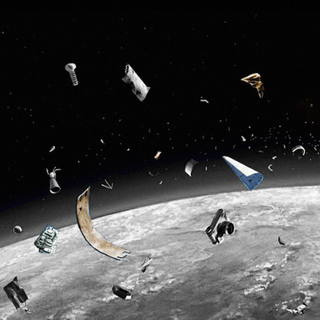Astronomers have just discovered two galaxies that were previously invisible to us. Located 29 billion light-years away from the Earth — which, in galactic terms, isn’t as far as it sounds — their discovery has led scientists to question our perceptions around the evolution of the universe since the “Big Bang” — or the “rapid expansion of matter from a state of extremely high density and temperature” that brought our universe into existence.
The two new galaxies have been named “REBELS-12-2” and “REBELS-29-2.”
Published in Nature, a new study detailing their discovery noted that the reason we didn’t know about the “rebellious” galaxies’ existence until now was that they were camouflaged by a thick layer of cosmic dust. This made them invisible to the optical lens of the Hubble Space Telescope, which was launched in 1990 and is considered “one of the largest and most versatile [telescopes], renowned both as a vital research tool and as a public relations boon for astronomy.”
However, scientists were able to spot these using ALMA radio telescopes in Chile’s Atacama Desert, which “can capture radio waves emitted from the coldest, darkest depths of the universe.”
“We were looking at a sample of very distant galaxies, which we already knew existed… And then we noticed that two of them had a neighbor that we didn’t expect to be there at all. As both of these neighboring galaxies are surrounded by dust, some of their light is blocked, making them invisible to [the Hubble Space Telescope],” Pascal Oesch, an associate professor at the University of Copenhagen, said in a statement.
Related on The Swaddle:
Older Stars in Galaxies Fight the Birth of New Stars: Study
“We are trying to put the big puzzle about the universe’s formation together and answer the most basic question: ‘Where does it all come from?'” Oesch explained, adding that “the invisible galaxies that we’ve discovered in the early universe are some of the first building blocks of the mature galaxies we see around us in the Universe today. So that’s where it all began.”
Their discovery suggests that the universe may actually contain many more galaxies than scientists had previously assumed.
“Our discovery demonstrates that up to one in five of the earliest galaxies may have been missing from our map of the heavens. Before we can start to understand when and how galaxies formed in the universe, we first need a proper accounting,” Oesch notes.
Incidentally, we will soon have the means to do the kind of “proper accounting” that Oesch is envisaging. The National Aeronautics and Space Administration (NASA), the European Space Agency, and the Canadian Space Agency have come together to build the “world’s most complex infrared telescope” — the James Webb Space Telescope. Presently scheduled to launch on December 18 this year, it is being dubbed as “Hubble’s successor.”
“The next step is to identify the galaxies we overlooked, because there are far more than we thought,” Oesch said, adding that “[the James Webb Telescope is] more sensitive than Hubble and able to investigate longer wavelengths, which ought to allow us to see these hidden galaxies with ease.”




